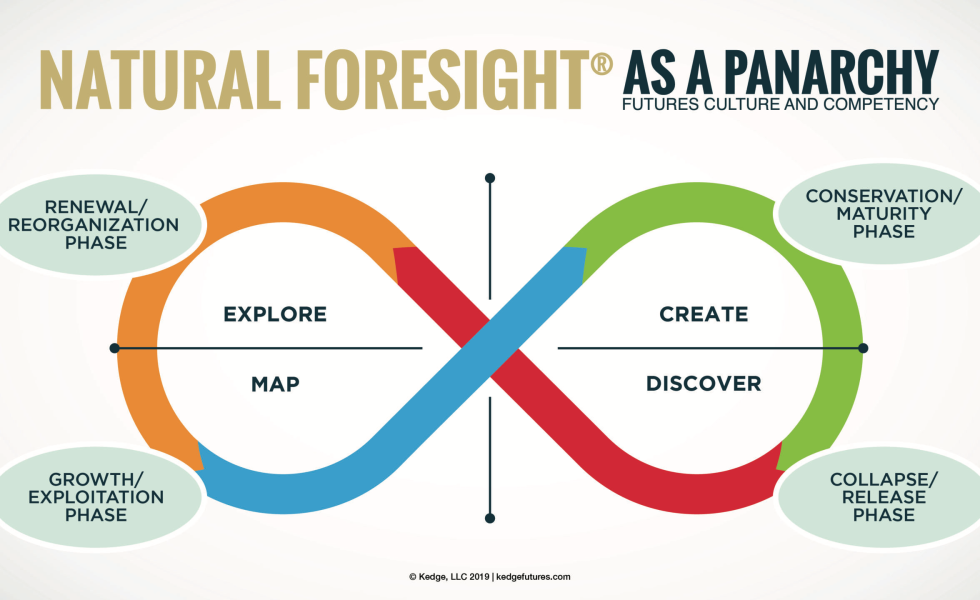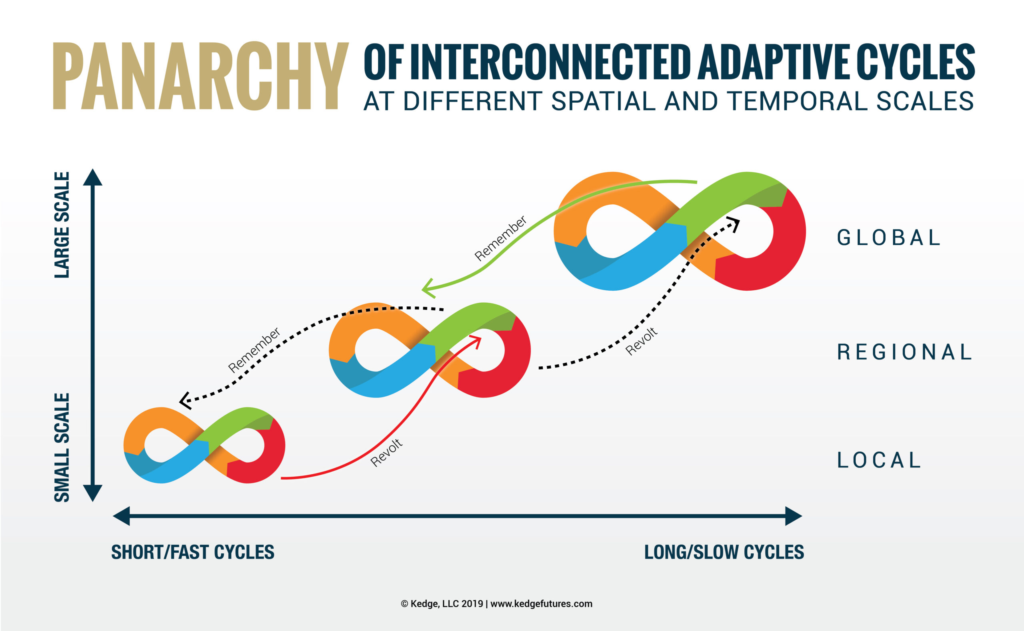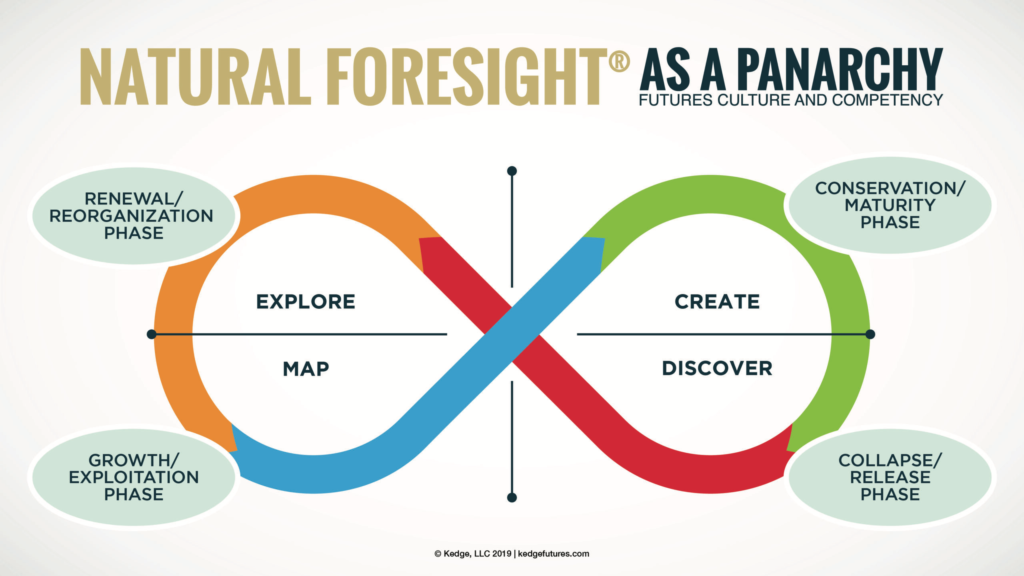Natural Foresight as a Panarchy

An excerpt from The Guide to Natural® Foresight Framework available for download here.
Underpinned by the concept of cascading S-curves and complex adaptive cycles (Wahl, 2016), Natural Foresight® is commonly presented in four facets which can be leveraged more holistically and iteratively than a process involving linear steps.
Depending on the need, the tools within Natural Foresight® can be deployed either together or independently, as well as in any order. This is due to the fact that Natural Foresight® mimics the comprehensive and integrated and continuous process of organic growth that is visible in nature.
The interrelation between multiple growth curves is often referred to as a panarchy.
The adaptive systems within a panarchy are most commonly represented by a figure eight or an infinity symbol. This demonstrates how the various phases within the system alternate in a continual cycle rather than following a straight line that has a clear-cut beginning and end. Each phase within this cycle represents a different part of the growth curve found in nature.
The first phase, Collapse or Release, represents a time of disruption and uncertainty (lower right hand), whereas the second phase, Renewal or Reorganization, represents a time of transformation and innovation (upper left hand).
The third phase, Growth or Exploitation, is characterized by rising diversity, seizing of opportunities and accumulation of resources (lower left hand), while the fourth phase, Conservation or Maturity, is characterized by stability and maintenance (upper right hand).
This cycle demonstrates how any system – whether social, technological, economic, environmental or political – experiences different phases that require adaptive, resilient, and transformative responses. However, the real power of the panarchy model is found in the nested systems that operate at different scales and speeds. While trends and events in a technological cycle may move very quickly, those within a political cycle may move very slowly. Each of these systems has a significant impact on one another, meaning that we cannot look at any trend, issue or system in isolation. In order to get a clearer picture of the world around us, we must acknowledge the complex influence that these nested systems have on our foresight efforts and future-empowered actions.

The Natural Foresight® Framework mirrors these complex systems and, ultimately, the model of the nested panarchy. In the Discover phase, individual and collective assumptions about the world around us are questioned, and this can release us from our preconceived notions about the future. In the Explore phase, environmental and horizon scanning introduces us to new ideas, reorganizing and renewing our approach to the future. In the Map phase, the development of scenarios, future pathways and emerging landscapes of change foster alternative possibilities and desired outcomes, and this enables us to pursue new growth. In the Create phase, practical steps are taken to bring the future into the present, and this builds maturity into the ideas, strategies, innovations, and models that have been produced through our foresight work.
In addition to mirroring the complex systems around us, Natural Foresight® allows users to enter or exit the framework at any point depending on their present needs. Since the idea behind the framework is systemic, connected and circular rather than linear, each phase can be iteratively refined by the next, as well as by the entirety of the process. (In other words, outcomes produced in the Create phase will be re-examined through further assumption and bias modeling, a deeper dive into horizon scanning, expanded scenario ethnography, and so forth.)

Reference
Wahl, D. C. (2016). Designing regenerative cultures. Axminster: Triarchy Press.
Access a full and complimentary copy of “The Guide to the Nature Foresight® Framework” here.

